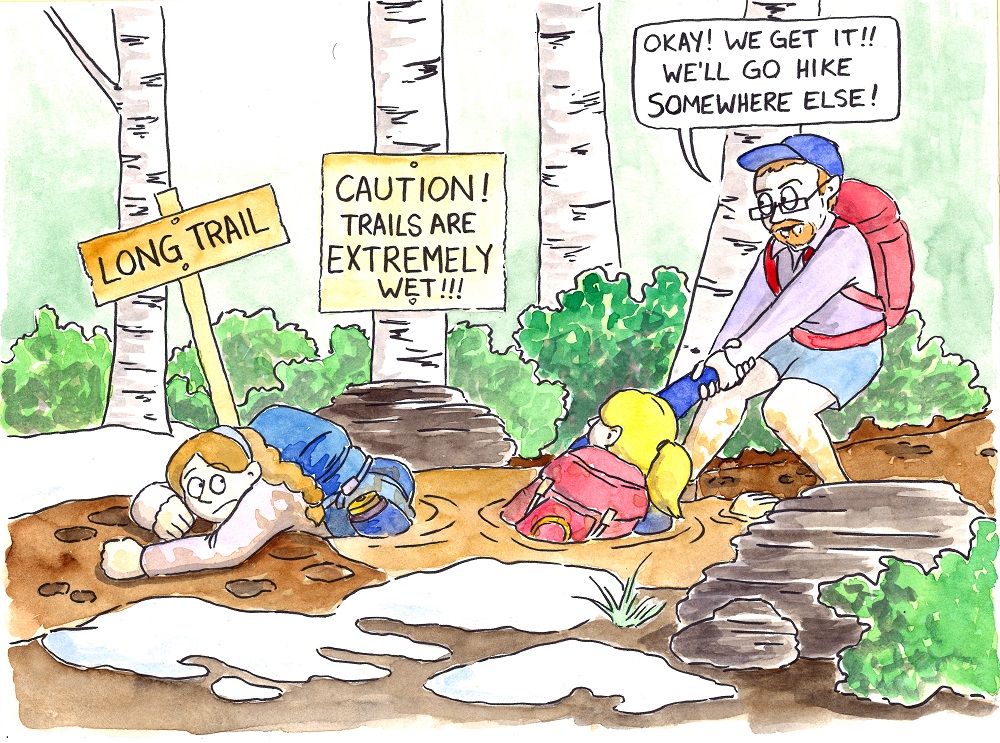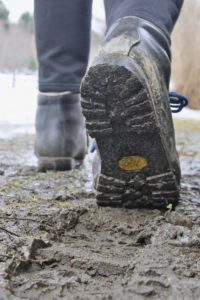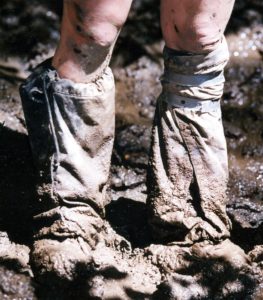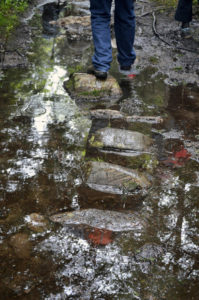Mud Season Has Arrived!
Help Protect Fragile Trail Environments
 Artwork by Emily Benning.
Artwork by Emily Benning.
Spring has sprung, although it’s not always easy to tell in Vermont. One day it dumps 6″ of snow, the next it’s 50° and sunny, and the back and forth wreaks havoc on our beloved trails. When the snow finally melts in town and at trailheads, it’s tempting to hope that the entire trail will be just as clear and dry. But experience has taught us that snow and ice hang on late into May at higher elevations, and even into June on the highest peaks. And that middle ground between the trailhead and the summit? It’s a muddy mess.

As the snow melts and the spring rains arrive, the ground can only hold so much water. Deep and wide mud puddles appear, sometimes taking up entire sections of trail. But we’re not just trying to keep you from getting dirty. Trails that are oversaturated are vulnerable to damage from soil compaction and erosion with every footstep. Soil compaction degrades the quality of the trail by reducing its ability to absorb water, causing increased flooding later and making it harder for vegetation to grow. Erosion then carries the soil away, leaving rocks and roots exposed.
Think you can just walk around that mud puddle blocking the trail? Think again – while walking around muddy areas will keep you dry, walking on the edges of trails tramples vegetation, widens the trail, and causes more damage to both trail and environment.
Help us help you! Trail maintainers, many of whom are volunteers, work hard to keep Vermont’s trails in good shape. Let’s not add to their work.
 Don’t be that guy.
Don’t be that guy.
You might say, But it’s so nice out! I want to hike!
Believe us, we get it! Hiking is what we live for, and it’s hard to beat that spring fever. First of all, keep in mind that what the weather is like at the trailhead is not necessarily what it is like farther up the trail. You could still be walking into winter if you somehow made it past the mud. Secondly, maybe try some different activities for the next two months: spring is a great time for other outdoor recreation like cycling, paddling, and even road walking. Check out our outings calendar to join a trip with a GMC section – we don’t just hike! Spring is also a great time to plan out your summer hikes. Who doesn’t love poring over maps and guidebooks? Or take a workshop and learn some new skills for later.
 If you really can’t resist the call of the trail, stick to low elevations and south-facing slopes, which tend to dry out earlier in the season. But even in those places, be prepared to turn around if the trail is suddenly muddy. One of the seven principles of Leave No Trace outdoor ethics is to only travel on durable surfaces. Rock is durable. Hard, dry soil is durable. Mud is not durable. Help us protect the trail for use the rest of the year by turning around when you come upon a muddy section of trail. The trails will dry out and harden again soon enough and you’ll be back out hiking before you know it.
If you really can’t resist the call of the trail, stick to low elevations and south-facing slopes, which tend to dry out earlier in the season. But even in those places, be prepared to turn around if the trail is suddenly muddy. One of the seven principles of Leave No Trace outdoor ethics is to only travel on durable surfaces. Rock is durable. Hard, dry soil is durable. Mud is not durable. Help us protect the trail for use the rest of the year by turning around when you come upon a muddy section of trail. The trails will dry out and harden again soon enough and you’ll be back out hiking before you know it.
Check out our list of suggested mud season hikes, GMC staff favorite hikes, and even more from VT State Parks (including a weekly trail update with the latest conditions). You can also join the GMC Facebook Group to chat with other hikers and see where other people are finding dry areas to get outside.
Mud season has traditionally ended around Memorial Day but climate change is making it harder to predict what the season will look like. If it’s getting later in the season and you suspect the trail you want to hike might be dried out, it doesn’t hurt to check. Call the park that the trail is in for a status update, or call GMC’s Visitor Center at 802-244-7037 (or email gmc@greenmountainclub.org). We do our best to keep abreast of conditions and we are happy to share any information we have.
Most of all, thank you for doing your part to keep our trails in great shape! Vermont’s trails are some of its best features and we want everyone to enjoy them for a long time.
Leave a Reply